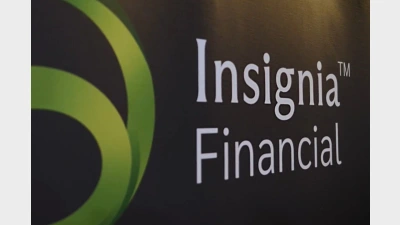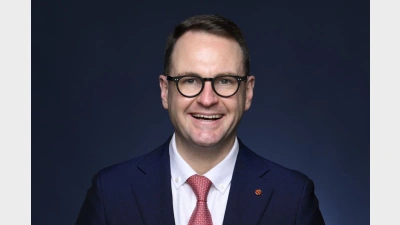Much ado about nothing?
Just as the Y2K bug failed to wreak the digital devastation many predicted, the general consensus from within the institutional superannuation sector is that the anticipated fallout from choice legislation is not happening — yet.
SuperRatings managing director Jeff Bresnahan says in the last 12 months the better-known retail funds have continued to do well, while the inflow of members and funds into smaller competitors has weakened.
But he suggests that there may be a tendency for some funds to underestimate the impact of choice, combined with other factors such as the Australian PrudentialRegulation Authority’s (APRA) superannuation entity licensing.
“A series of factors have come into play that [some funds] didn’t read.”
Bresnahan says membership growth across the board has slowed considerably. “[The last year has seen] single-digit instead of double-digit member growth,” he says, predicting that the year ahead will be one of the hardest for master trusts in some time. “They can’t rely on [members with] multiple funds for growth anymore.”
Bresnahan thinks those funds that have difficulty marketing will suffer the most. “There is no way to get a clear read [on the impact of choice], but it’s probably made marketing a lot harder.”
According to Associationof Superannuation FundsofAustralia (ASFA) head of research Ross Clare, the response to choice has been deeply under-whelming. “The predicted massive consolidation of master trusts hasn’t happened. The flows between funds aren’t much different [to what they were before choice] and could even be lower than they used to be. I’m not sure it’s any different to the natural ebbs and flows.”
Research commissioned by ASFA last year indicates that in the first three months of choice, 7 per cent of those surveyed changed funds. Of these, only 4 per cent chose a new fund as a conscious act, with 2 per cent selecting a default fund with a new employer and 1 per cent switching because of a fund closure.
Clare believes the situation remains much the same. “All evidence suggests that employees are empowered, but it’s not necessarily a power that they want to use,” he says. “The flows have not been remarkable, either in or out.”
He says that, as expected, it is the smaller funds that have borne the brunt of any attrition. “The largest five or 10 [master trusts] are still around. The smaller ones are those that have folded in on themselves, which isn’t surprising.”
Investment and Financial Services Association(IFSA) deputy chief executive John O’Shaughnessy echoes Clare’s views. “We continue to subscribe to the view that it’s going to be a slow burn, with people mainly making their [superannuation] decisions during other substantive life changes. Our research says that it could be as long as 10 years before fundamental change takes place,” he says.
For the time being at least, he feels APRA’s new licensing regime for Responsible Superannuation Entities (RSE) is having a much more immediate and dramatic impact. The statistics seem to support this notion, with the number of RSEs falling by 1,200 to 307 since the new licensing scheme was introduced. “Super licensing is causing as much change as choice. There is probably more rationalisation activity as a result of this,” O’Shaughnessy says.
The main concern from IFSA’s perspective is that those who exercise choice do so on the basis of accurate information. While much of the speculation prefacing the introduction of choice evoked images of members madly rolling over and consolidating funds, O’Shaughnessy believes this has not occurred. “People seem to be looking at making their choices based on greater advice,” he says, but stresses that this is based only on anecdotal evidence.
“[There should be] more research coming in 2006-07 to give a better understanding of changes to stocks and flows,” he says.
Being relatively early days, there is little research from the master trusts, but their general response is that the frenzied lead-up has turned out to be a case of much ado about nothing. “It hasn’t really happened; we’ve seen no activity over and above the previous 12 months,” says MLC head of product — business super Brent Howells. “Fund choice has had minimal impact on MLC’s corporate super business in the first year; our statistics remain consistent with long-term trends.”
Howells concurs with the views of ASFA and IFSA that having the power to choose and actually exercising this right are very different things. “Our experience suggests that the trigger point for an employee to review their superannuation arrangements remains a change in employment, and this is interesting because it’s not what the market expected,” he says.
While he concedes that MLC corporate super outflows are “probably a tick higher than a year ago”, Howells says they are not seeing a trend of members moving to competitors, either industry or retail, or to self-managed funds.
Since July 1, last year, MLC’s MasterKey Business Super’s funds under management have increased by 17 per cent, with inflows and member numbers up 12 per cent and 14 per cent respectively.
Plum Financial Services, a subsidiary of MLC, administers the Plum Superannuation Fund master trust. Plum managing director Mike Fitzsimons also says their business has not been greatly affected. “Plum has not seen a noticeable impact in terms of members joining or leaving the Plum Superannuation Fund,” he says, attributing this to the strong returns over the last three years. “Strong investment markets have led to happy superannuation members. Happy members will not bother to compare what super they have with what’s available in the market.” Looking ahead, he believes attracting new employees to join will be critical.
The response from another leading fund administrator, Asgard, is much the same. “We haven’t seen a significant impact, and only [in the area of corporate super] where we projected,” says Asgard product director Dean Thomas.
Asgard’s Employee Super has over 6,000 corporate members and, according to Thomas, this number has remained relatively constant over the last 12 months. “While there’s always a percentage of churn, we’ve seen no pick-up in redemption rates,” he says. Since Asgard started closely monitoring outflows in July last year, Thomas says they have only seen about 5 per cent of contributions going anywhere other than the default fund.
In preparing for the more competitive post-choice superannuation environment, he notes that one of Asgard’s approaches was to make it as easy as possible for employer clients to meet their obligations for rollovers and contributions. One tactic was to employ the services of a central clearing house to reduce error margins and processing times.
Mike Fielding is the head of product strategy at one of these processing hubs. Investmentlink services around 40 per cent of Australia’s superannuation administrators, including Asgard, AMP, ING and Mercer.
According to Fielding, a potential explanation for the ‘it’s not really happening’ response of many fund administrators is measurement of the wrong statistics. “The key metric employed by many funds to substantiate the impact of choice has been based on measuring rollovers,” he says. But this doesn’t take into account the number of employees who are opting not to contribute to a new employer’s default fund as the first step in consolidating their superannuation accounts. “Choice is only the beginning of the account consolidation journey.”
A campaign conducted by AMP last year goes some way toward validating this claim. According to AMP director of corporate super Greg Healy, when callers to their Victorian call-centre were prompted to consolidate multiple superannuation funds, AMP saw an average account balance increase of 30 per cent. Leaving aside these isolated results, Healy says he has not seen any overwhelming response to choice among its high-end corporate clients in the last 12 months.
AMP has around 60,000 corporate superannuation clients in its Signature Super master trust, with 4,000 employing 20 or more people. According to Healy, this number has remained relatively constant. Between March, 2005, and June 30, 2006, Signature Super’s funds under management grew from $180 million to $4 billion, but Healy is quick to attribute a large portion of this to business won as a result of APRA’s RSE licensing and a general trend toward corporate superannuation outsourcing.
Speaking about member inflows for AMP’s superannuation business generally, including both individual and corporate, Healy estimates they have added 130,000 members in the last 12 months. “But 80,000 would be from APRA licensing changes, [the remaining] 50,000 would be more reflective of choice and portability legislation,” he says.
It appears that the full effect of superannuation choice legislation will take longer to manifest than many pundits previously thought. The myriad of adjustments and proposed changes to the superannuation landscape also make it difficult if not impossible to accurately judge its impact. For superannuation administrators, perhaps the only certainty of the new environment is that fierce competition is set to continue for some time yet.
Recommended for you
Future Group is set to take on nearly $1 billion in funds under management (FUM) and welcome more than 100,000 new members following two significant successor fund transfers.
Insignia’s Master Trust business suffered a 1.9 per cent dip in FUA in the third quarter, amid total net outflows of $1.8 billion.
While the Liberal senator has accused super funds of locking everyday Australians out of the housing market, industry advocates say the Coalition’s policy would only push home ownership further out of reach.
Australia’s largest superannuation fund has confirmed all members who had funds stolen during the recent cyber fraud crime have been reimbursed.












